East African Countries
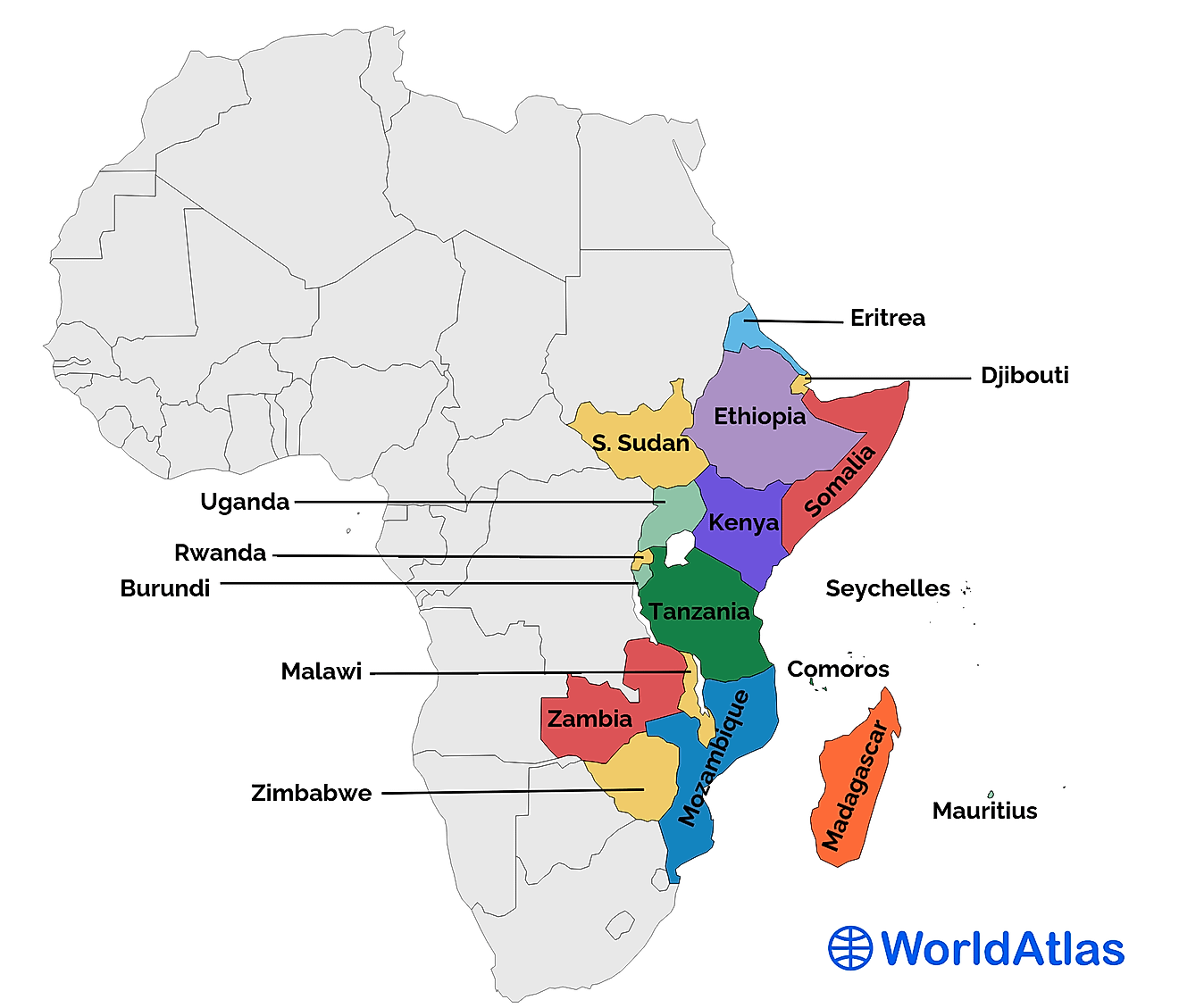
- East Africa is the most populous subregion of Africa, with a population of approximately 455 million people.
- There are 18 countries and 2 dependencies in East Africa.
- The Swahili language is widely used as a means of communication in several East African countries.
- East Africa has some of the world's fastest growing economies, including Ethiopia, Rwanda, Tanzania, and South Sudan.
- Most of East Africa's people practice either Christianity or Islam.
East Africa is a subregion of the continent of Africa, according to the United Nations Geoscheme. It consists of 18 countries and 2 dependencies. The subregion stretches from Eritrea in the north to Mozambique in the south. Off the coast of East Africa is the Indian Ocean. Middle Africa lies to the west of East Africa, while Southern Africa is situated to the southwest. The border between East Africa and North Africa consists of the borders separating the North African country of Sudan from the East African countries of South Sudan, Ethiopia, and Eritrea. Three of East Africa’s countries, Mauritius, Madagascar, and the Seychelles, are island countries, as are the French dependencies of Mayotte and Reunion. Seven of East Africa’s countries are landlocked countries.
Countries Of East Africa
- Burundi
- Comoros
- Djibouti
- Eritrea
- Ethiopia
- Kenya
- Madagascar
- Malawi
- Mauritius
- Mozambique
- Rwanda
- Seychelles
- Somalia
- South Sudan
- Tanzania
- Uganda
- Zambia
- Zimbabwe
Demographics Of East Africa
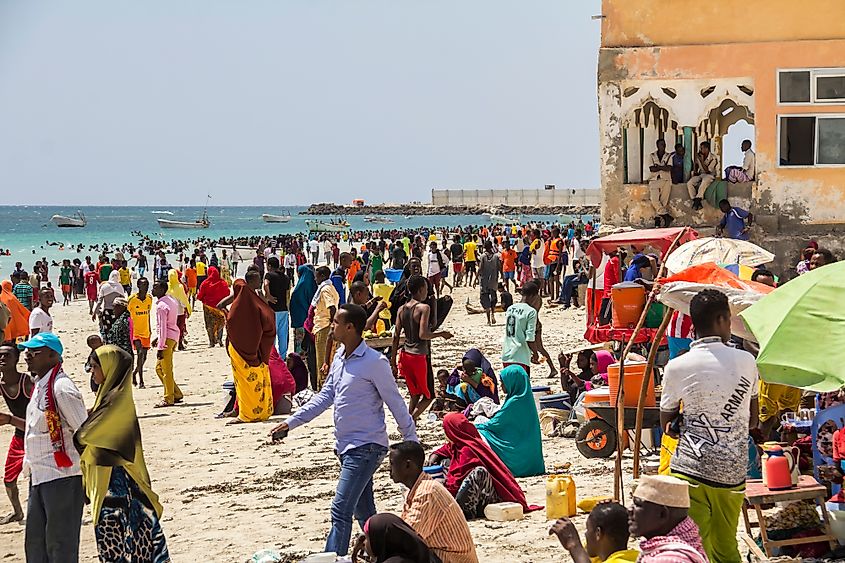
Of the estimated 1.369 billion people who live on the African continent, 455 million live in East Africa, making it the most populous subregion of the continent. Most of East Africa’s population, nearly 70%, lives in rural areas, though the subregion does have several large cities with populations of in excess of 1 million. All but one of East Africa’s largest cities are national capitals. Mogadishu, for example, is the capital of Somalia, and has a population of approximately 2.1 million people. Nairobi, the capital of Kenya, has an estimated population of 3.5 million people. Addis Ababa, Ethiopia’s capital, has about 3.4 million people. The most populous city in East Africa is the city of Dar El Salaam, located on the east coast of Tanzania. It used to be Tanzania’s capital, though that honor now belongs to Dodoma, a city located in Tanzania’s interior.
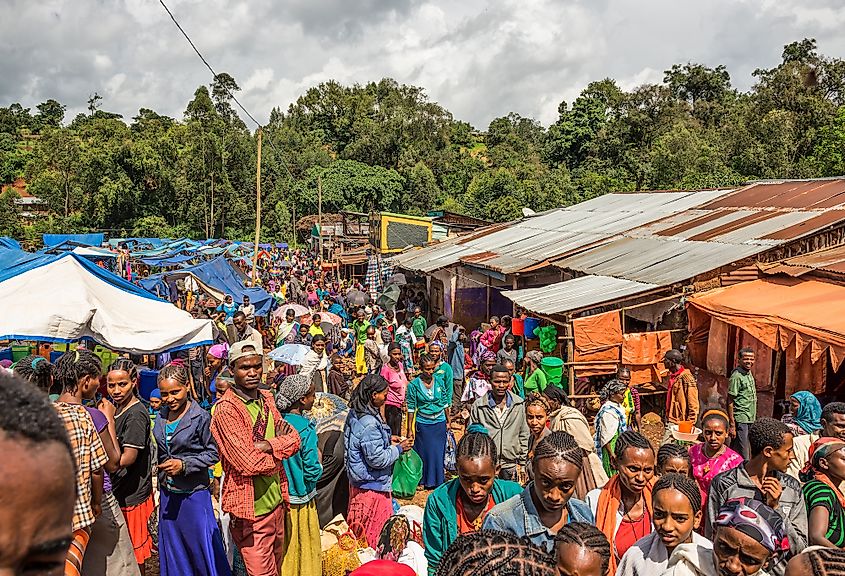
Nearly a quarter of East Africa’s population lives in one country, Ethiopia, which is also the largest country in the subregion in terms of land area. Located on the Horn of Africa, Ethiopia has a population of approximately 117.5 million people, which also makes it the second most populous country in all of Africa, surpassed only by Nigeria in West Africa. Ethiopia has almost twice the population of the next most populous country in East Africa, Tanzania, which has a population of about 59.7 million. Tanzania is followed closely by Kenya, with a population of approximately 53.7 million. There are 2 countries in East Africa with populations of less than 1 million people, Comoros and the Seychelles. The French dependencies of Mayotte and Reunion, both located in the Indian Ocean, also have populations of less than 1 million. The Seychelles is the least populous country in East Africa and Africa as a whole. It has a population of less than 99,000. It is also the smallest country in both East Africa and the whole of Africa, with a land area of just 460 sq. km.

Ethnic Groups
Like most of Africa, East Africa is multiethnic, multicultural, multilingual, and multi-religious. There are very few countries in the subregion in which one ethnic group is the majority. The exceptions are Somalia, Djibouti, Eritrea, Rwanda, and Burundi. Somalis make up the majority of the population in both Somalia and Djibouti, though the Somalis are divided up into several clans, and disagreements among these clans have historically led to violence and bloodshed. In Eritrea, the Tigrinya make up 55% of the country’s population. Both Rwanda and Burundi have Hutu majorities. It was the animosity between the Hutus and the minority Tutsis that ultimately led to the Rwanda Genocide of 1994, in which roughly 1 million Tutsis were killed.
Language
From a linguistic perspective, there are just as many languages in East Africa as there are ethnic groups, if not more. One language, however, is a common vernacular among many people in the subregion. That language is Swahili, which is primarily a Bantu language, though it also contains elements of Arabic in its vocabulary. It is widely spoken in Tanzania, Kenya, and Uganda. There are also some Swahili speakers in Somalia, Rwanda, Burundi, and Mozambique.

The people of East Africa also use European languages to communicate with each other, as all the countries of the subregion were colonized by European powers at one time or another. English, for example, is used among people in Kenya, Uganda, Tanzania, Malawi, Zambia, and Zimbabwe, as all these countries were once controlled by the British Empire. French is often used in Rwanda and Burundi, and Portuguese is used in Mozambique.
Religion
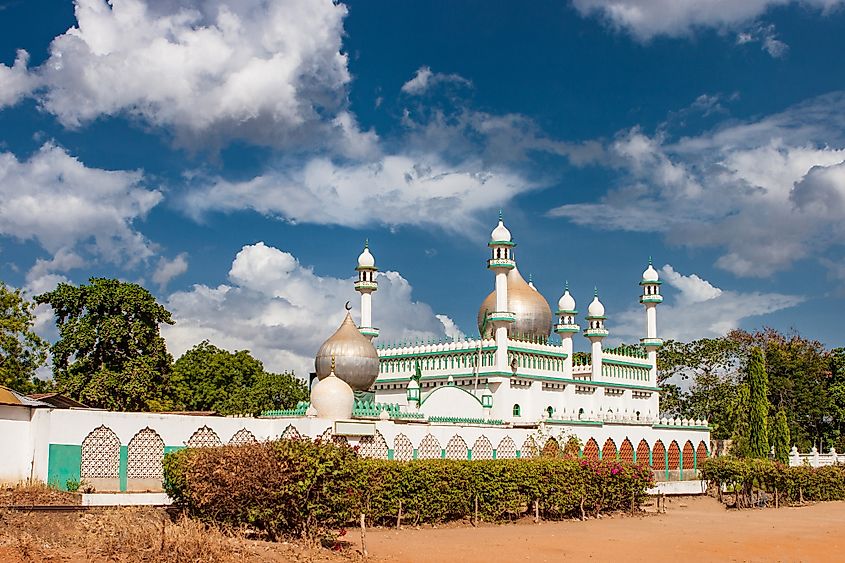
In terms of religion, Christianity and Islam are the two most prevalent religions in East Africa. Islam is the dominant religion in the Horn of Africa, specifically in Djibouti, Somalia, eastern Kenya, and the Ethiopian region of Ogaden, in which Somalis are the dominant population. About a third of Tanzania’s population practices Islam. Christianity is the dominant religion in the rest of East Africa, though many people in the subregion also practice traditional African religions.
Economy Of East Africa
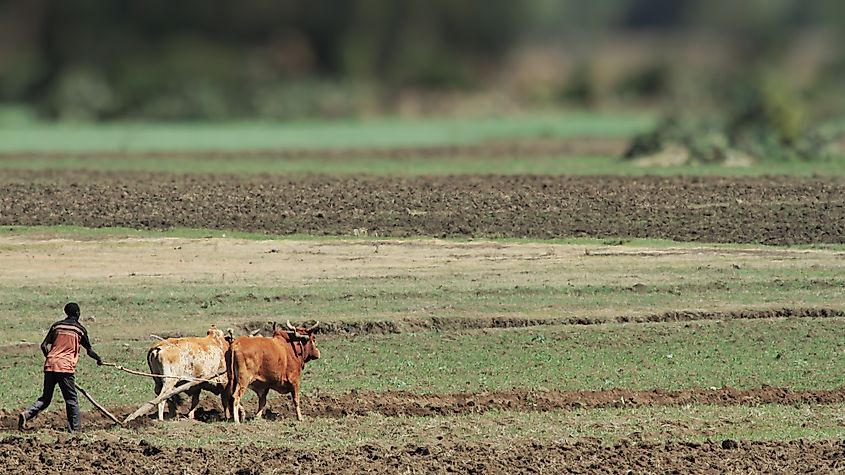
All of the countries in East Africa have developing economies, though some countries in the subregion are more developed than others. Kenya has East Africa’s biggest economy, valued at US$101.05 billion in 2020. Not far behind is Ethiopia, which had a total GDP of US$95.59 billion in the same year. East Africa now has some of the fastest-growing economies in both Africa and the world as a whole. Indeed, South Sudan, Rwanda, Ethiopia, and Tanzania were among just a handful of countries to register economic growth in 2020, the year that the COVID-19 pandemic wreaked havoc on the global economy. Rwanda is projected to be the 3rd fastest-growing economy in the world in the period between 2021 and 2025.
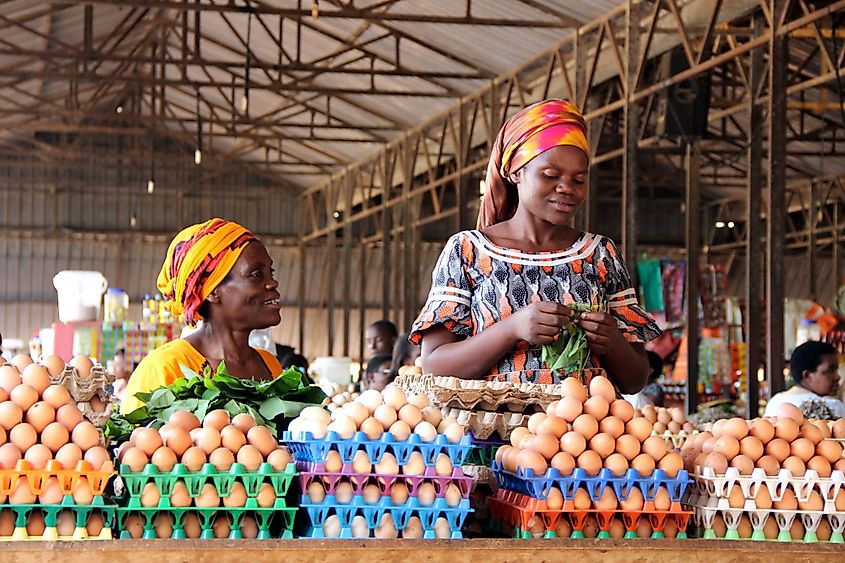
Agriculture is the primary engine of growth in the fast-growing economies of Ethiopia, Rwanda, and Tanzania. Indeed, 85% of Tanzania’s exports are related to the agricultural sector. Rwanda’s government estimates that 90% of the country’s workforce is dedicated to agricultural work. More than half the GDP in Ethiopia is also based on agriculture. These emerging economies have, however, been developing other important sectors. Rwanda, for instance, has a budding tourism industry. In 2017, tourism contributed to about 13% of the country’s GDP. Rwanda also hopes to become a leader in renewable energy. In fact, renewal energy is already used to meet most of the country’s energy needs. Ethiopia is rapidly developing a robust manufacturing sector. It already hosts the most prominent industrial park in Africa, known as Hawassa Industrial Park.
East African Countries
| Rank | Country | Population | Total Area in km2 |
|---|---|---|---|
| 1 | Burundi | 11,530,580 | 27,830 |
| 2 | Comoros | 850,890 | 2,235 |
| 3 | Djibouti | 973,560 | 23,200 |
| 4 | Eritrea | 3,213,970 | 117,600 |
| 5 | Ethiopia | 112,078,730 | 1,104,300 |
| 6 | Kenya | 52,573,970 | 580,367 |
| 7 | Madagascar | 26,969,310 | 587,041 |
| 8 | Malawi | 18,628,750 | 118,484 |
| 9 | Mauritius | 1,265,710 | 117,600 |
| 10 | Mozambique | 30,366,040 | 799,380 |
| 11 | Rwanda | 12,626,950 | 26,338 |
| 12 | Seychelles | 97,630 | 455 |
| 13 | Somalia | 15,442,910 | 637,657 |
| 14 | South Sudan | 11,062,110 | 644,329 |
| 15 | Tanzania | 58,005,460 | 947,300 |
| 16 | Uganda | 44,269,590 | 241,038 |
| 17 | Zambia | 17,861,030 | 752,618 |
| 18 | Zimbabwe | 14,645,47 | 390,757 |











